An Invasive Meltdown
“An Invasive Meltdown”
(Excellent Columbus Dispatch article on invasive plant research)
June 3, 2008
Today’s Columbus Dispatch has a terrific article by Spencer Hunt focusing on a study by the U.S. Forest Service and OSU Plant Ecologists. The heart of the problem is the emerald ash ash borer that has caused the deaths of ash trees in the midwest. The tree loss creates sunny patches that might help invasive plants in a sort of “chain reaction” of vegetation disruption. The researchers are studying these effects at 155 research plots in Ohio and Michigan. The article has some very good pictures by Tom Baker of the Dispatch, but unfortunately they had to be rather small in order to fit into the narrow newspaper columns. Here from my photo archives are the three invasive species profiled in the article. The italicized captions are direct quotations from the profiles (Spencer Hunt, “Invasive Meltdown,” Columbus Dispatch, June 3, 2006, page A7).

Japanese honeysuckle (Lonicera japonica).
(August 30, 2003, Stages Pond State Nature Preserve, Pickaway County, OH).
“A vine that can grow when native plants are dormant; smothers most native plants in its path”

Autumn olive (Eleagnus umbellata) (May 5, 2006, along Rte 315, Delaware, OH)
“Brought to the U.S. from Asia in the 1830s; grows quickly and can trap nitrogen that other plants need.”
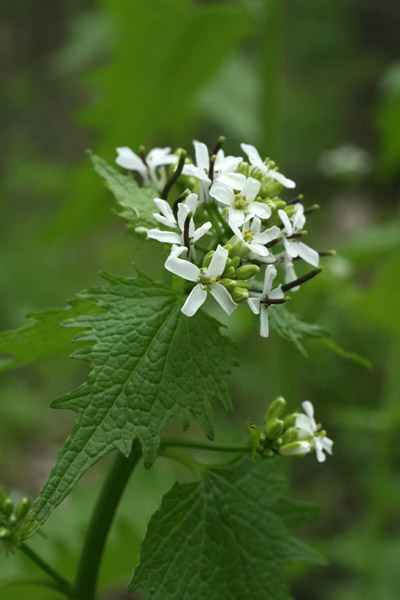
Garlic mustard (Alliaria petiolata)
(May 6, 2008, Pleasant Township Park, Marion County, OH)
“Brought to America by European settlers; produces many seeds and crowds out native plants.”
The fear is that the invasive plants will eliminate shade-tolerant native species. The four native plants that are mentioned as being vulnerable are wild geranium, wild ginger, Virginia creeper, and sensitive fern.
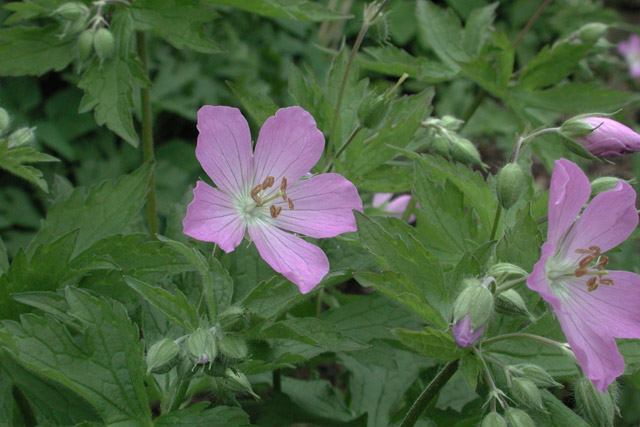
Wild geranium (Geranium maculatum)
(May 3, 2003, Terradise Nature Preserve, Marion County, OH).
This species has a ballistic seed dispersal mechanism wherein the fruits, when dry and mature, split lengthwise abruptly and fling the seeds away from the parent plant
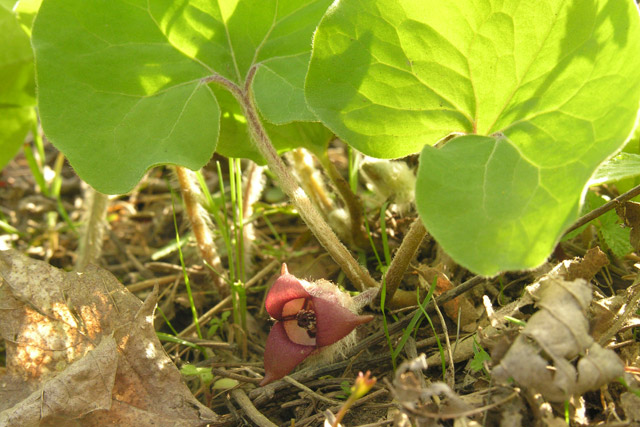
Wild ginger (Asarum canadense)
(May 5, 2005, Delaware Wildlife Area, Marion County, OH)
Not related to the ginger spice of commerce, but very similar in fragrance.
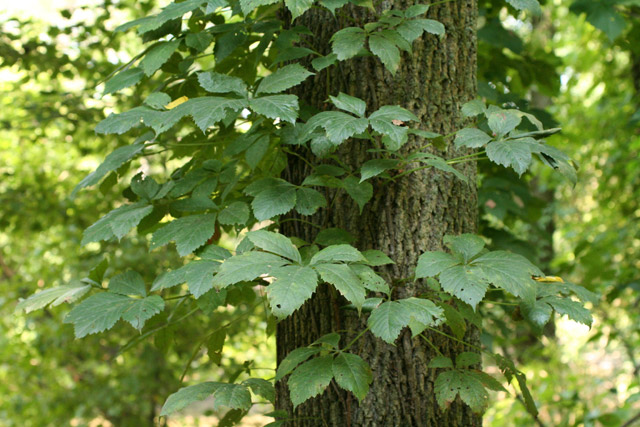
Virginia creeper (Parthenocissus quinquefolia)
(September 8, 2005, Caledonia Nature Preserve, Marion County, OH)
Often growing alongside poison ivy, distinguishable from it by having five leaflets instead of poison ivy’s three leaflets.
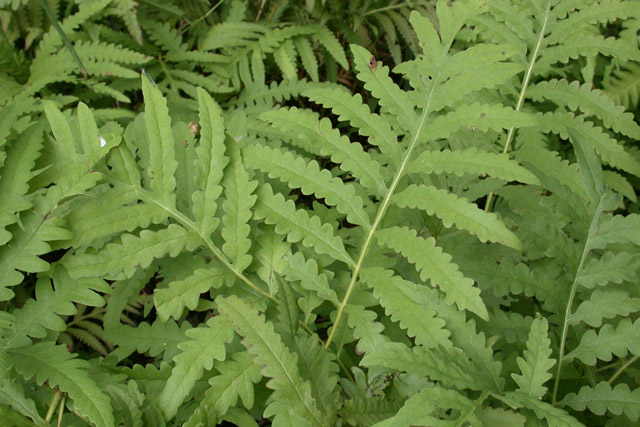
Sensitive fern (Onoclea sensibilis).
(August 31, 2004, Stages Pond State Nature Preserve, Pickaway County, OH)
Named for its sensitivity to frost.
The “chain reaction” that the ecologists are worried about is the detrimental effects that could cascade down to the organisms (microbes, insects and other animals) that are associated with the native plants. This is both a serious problem and an intriguing area for research. Another great piece of science reporting by our local paper, much appreciated!
